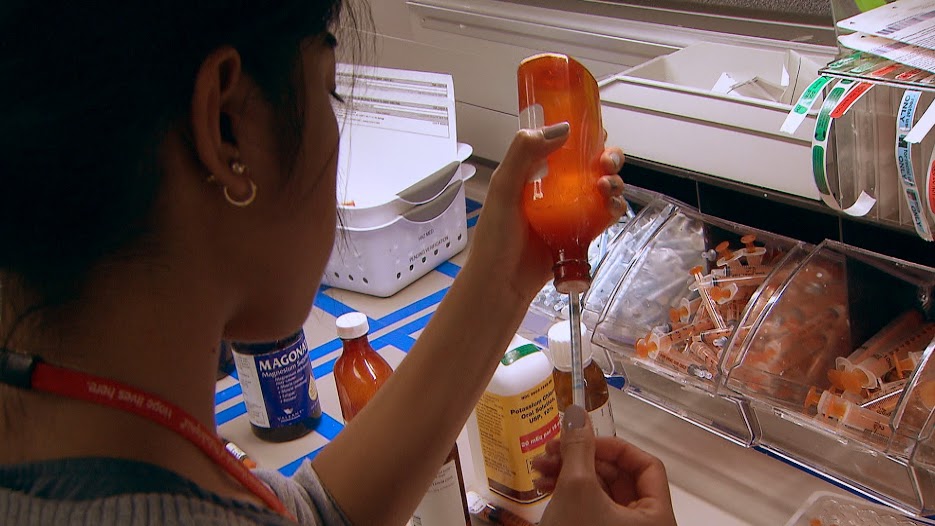When It Comes to Supplements, What’s Really in the Bottle?

January 19, 2016
Share
It’s estimated that half of all Americans take a health supplement every day, from fish oil to multivitamins to diet pills.
The more than $30 billion vitamins and supplements industry says these products can make consumers healthier.
But Supplements and Safety, a FRONTLINE investigation in collaboration with The New York Times that premieres tonight, raises tough questions about how vitamins and supplements are marketed and regulated, and examines how it’s often hard to know what’s really in the bottles you’re buying.
In short, unlike with medical drugs, companies making vitamins and supplements do not have to prove that their products are safe and effective before putting them on the market — unless they’re introducing a new ingredient that’s never been marketed before.
That fact wasn’t sitting well with the Children’s Hospital of Philadelphia, one of the nation’s leading pediatric hospitals, as a dramatic scene from Supplements and Safety recounts.
Pharmacists there were seeing families “showing up literally with shopping bags full of dietary supplements,” Sarah Erush, the hospital pharmacy’s clinical manager, tells FRONTLINE in the below excerpt from the film.
Erush was concerned: If a patient or their family brings a medication into the hospital, pharmacists are required to verify that the medication is what its packaging says, that it’s labeled appropriately and that it’s being dosed appropriately — but no such requirements exist for supplements.
So in 2013, Erush and her colleagues took action. They decided to ask supplements manufacturers to prove that their labels were accurate by submitting certificates of analysis from an independent party.
Ninety percent of the companies never responded, says Erush’s colleague, Paul Offit, M.D.
“And of the 10 percent that responded, often, they would send us certificates of analysis where what was on the label wasn’t even close to what was in the bottle,” according to Offit.
Those kinds of discrepancies could have dire consequences, especially for the hospital’s tiniest and most vulnerable patients. In the below scene, Erush gives correspondent Gillian Findlay the example of a vitamin D drop that was going to premature infants where the true dosage was more than double the amount necessary.
“So if we’re dosing premature infants who need very tiny doses of this drug, we’re now potentially giving them double what they should get, and could really put them at risk for toxicity,” Erush says.
In the end, only 35 supplements met the hospital’s standards.
Erush was left, in her words, “worried and dismayed.”
“It is a complete unknown when you are buying a dietary supplement, unless you have some proof of what is in that product,” she says. “It could be anything.”
For more on how supplements are labeled, marketed and regulated, watch FRONTLINE’s Supplements and Safety starting tonight, Tues., Jan. 19, on PBS and online at 10 p.m. E.S.T./9 p.m. C.S.T. Check your local PBS station for details. The documentary is a co-production with the Canadian Broadcasting Corporation in collaboration with The New York Times.

Related Documentaries
Latest Documentaries
Related Stories
Related Stories
Policies
Teacher Center
Funding for FRONTLINE is provided through the support of PBS viewers and by the Corporation for Public Broadcasting. Additional funding is provided by the Abrams Foundation; Park Foundation; the John D. and Catherine T. MacArthur Foundation; and the FRONTLINE Journalism Fund with major support from Jon and Jo Ann Hagler on behalf of the Jon L. Hagler Foundation, and additional support from Koo and Patricia Yuen. FRONTLINE is a registered trademark of WGBH Educational Foundation. Web Site Copyright ©1995-2025 WGBH Educational Foundation. PBS is a 501(c)(3) not-for-profit organization.



















